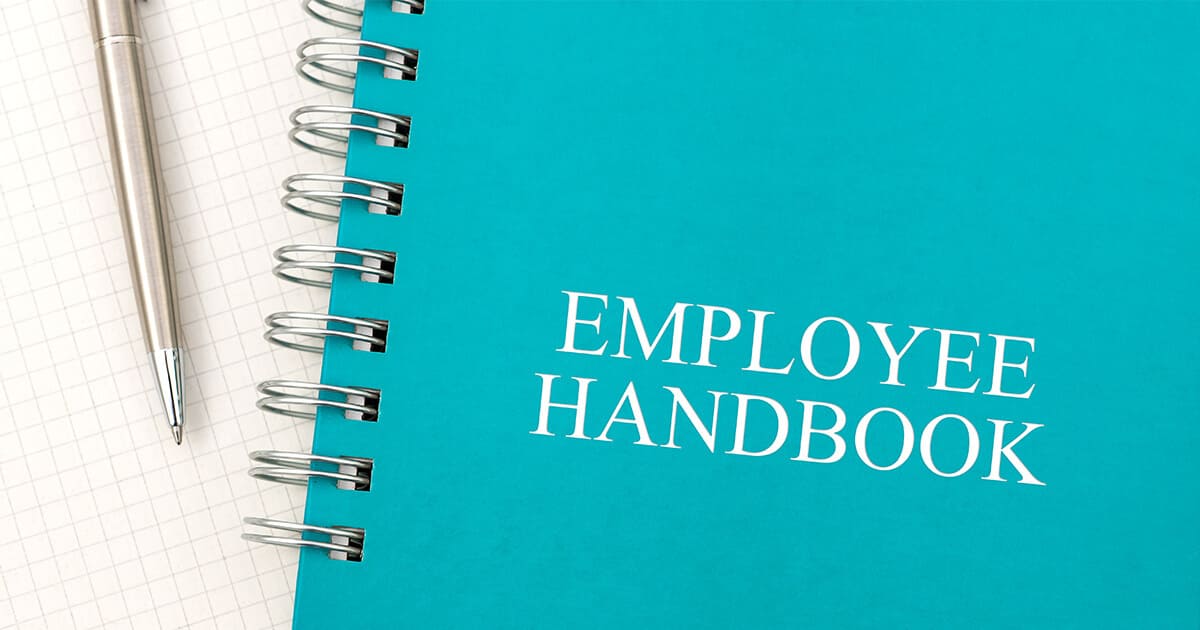Most dental offices are not large enough to have a full-time human resources employee. Often, the practitioner is often faced with filling that role, in addition to their clinical duties. Unfortunately, employment law is not on the curriculum at most dental schools, so creating an employee handbook can be challenging. Many dentists find themselves making it up as they go along, which is why the most common source of litigation for a dentist is the employees, not the patients.
With patients, it’s almost always a clinical malpractice claim. With your employees, it can be almost anything, such as wage theft, harassment, medical leave, racial or religious discrimination, disparate treatment, and retaliation among the most popular claims.
Having a set of clear-cut and fairly applied rules for office staff members helps manage expectations and limit potential liability, which is why creating an employee handbook is necessary for every dental practice.
Are Employee Handbooks Legally Binding?
One of the most important things to include in an employee handbook is some sort of disclaimer that the handbook is not a legally binding contract and that all employees remain “at will,” and can quit or be fired at any time. After that, think of the handbook as a list of frequently asked questions from your employees.
What Should Be Included in An Employee Handbook for Dental Practices?
First, include an introduction and basic data on the practice. Answer questions like, “when is the office open for business,” “when should the employees arrive and depart,” “when is lunch, and how long is it,” “what holidays does the office close for?”
It’s also important to include things like a mission statement, values, and goals. Many employee handbooks for dental practices also include a section on dental treatment philosophy or standard of care.
Employee Compensation
Because your staff will not work for free, compensation is also essential for an employee handbook. This includes policies on clocking in and out (including a ban on clocking other employees in and out), overtime, and payroll withholding. Information on when and how the office payroll is distributed (check, direct deposit, etc.) is also helpful.
Workers’ compensation and office leave policies also need to be included. Remember to account for non-vacation leave, such as jury duty, military service, or FMLA leave.
Employee Benefits
After compensation, the handbook needs to include a section on benefits. If the office offers vacation, sick days, or other paid time off, list it here. Include information on any medical insurance or retirement programs, as well as any office bonus program. Most offices have a policy on in-house employee dental benefits, and it needs to be included.

Workplace Policies and Standards of Behavior
The office policy on sexual or other harassment (including reporting methods) needs to be clearly stated. Also include statements that the practice is complying with various Federal and State laws, such as the Family and Medical Leave Act (FMLA), Equal Employment Opportunity Act (EEOC), the Americans with Disabilities Act, etc.
The employee handbook should also include standards of behavior, such as personal appearance, personal protective equipment use, prohibitions on workplace relationships, smoking during work hours, etc.
Disciplinary Action and Termination
Finally, the handbook needs a section on employee disciplinary action and termination. Include requirements for confidentiality and non-disclosure of practice information as well as the office substance abuse policy and employee discipline procedures.
Give information on termination options for both the office and the employee, as well as expectations of both parties post termination (final paychecks, termination of benefits, returning keys, etc.)
Most importantly, you must document any discipline or other employment matters at the time they are decided. Without proof that the rules were followed, it is much more difficult for the dentist to protect himself from claims of unequal enforcement of the rules.
Employee Handbook Sign Off
Review and update the employee handbook annually. Distribute revised handbooks to staff members at your annual HIPAA compliance meeting (you’re having one of those too, right?) and have employees confirm receipt in writing.
This is particularly important if benefit or bonus schemes are changed, as former employees love to dig up old handbooks and demand discontinued benefits they have not been receiving.

Review the Employee Handbook With a Professional
Consider bringing in professional help when preparing an employee handbook. There is no need to remake the wheel. Many vendors or employment law attorneys have standard documents that they can tailor to your needs.
Just because you put it in the employee handbook does not make it legal. Getting a lawyer’s opinion on the final document is highly recommended. For example, many handbooks drafted by dentists forbid employees from discussing compensation amongst themselves, which is illegal.
Key Takeaways for Creating an Employee Handbook for Dental Practices
Creating an employee handbook guides and ensures your dental practices’ policies and procedures are communicated to your employees.
When writing your employee handbook, tailor your policies to the needs and culture of your dental practice. Ensure you’re complying with legal and regulatory requirements.
About the Author
Preston has been evaluating and transitioning dental practices since 2005. Preston brings a wealth of experience to his transitioning clients. He received his bachelor’s degree in chemistry and applied mathematics at Hampden-Sydney College, and then went on to receive his master’s degree in chemistry and his juris doctorate from the University of Illinois. He is currently a member of the Louisiana state and U.S. Patent bars. He has worked as a transition specialist with Lovelace and Associates since 2005. He often addresses dental associations on his areas of expertise, and he was a featured speaker at the ADA’s 2013 annual session on practice transitions.
LinkedIn
This entry was posted on Wednesday, March 29th, 2023 by Preston Lovelace, JD., MS. and is filed under
Legal, Practice Management,



